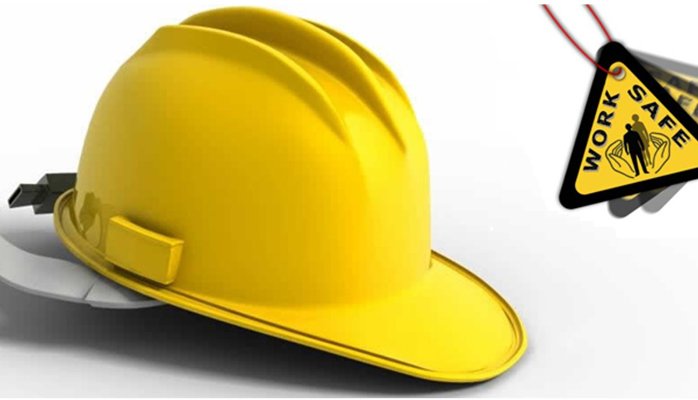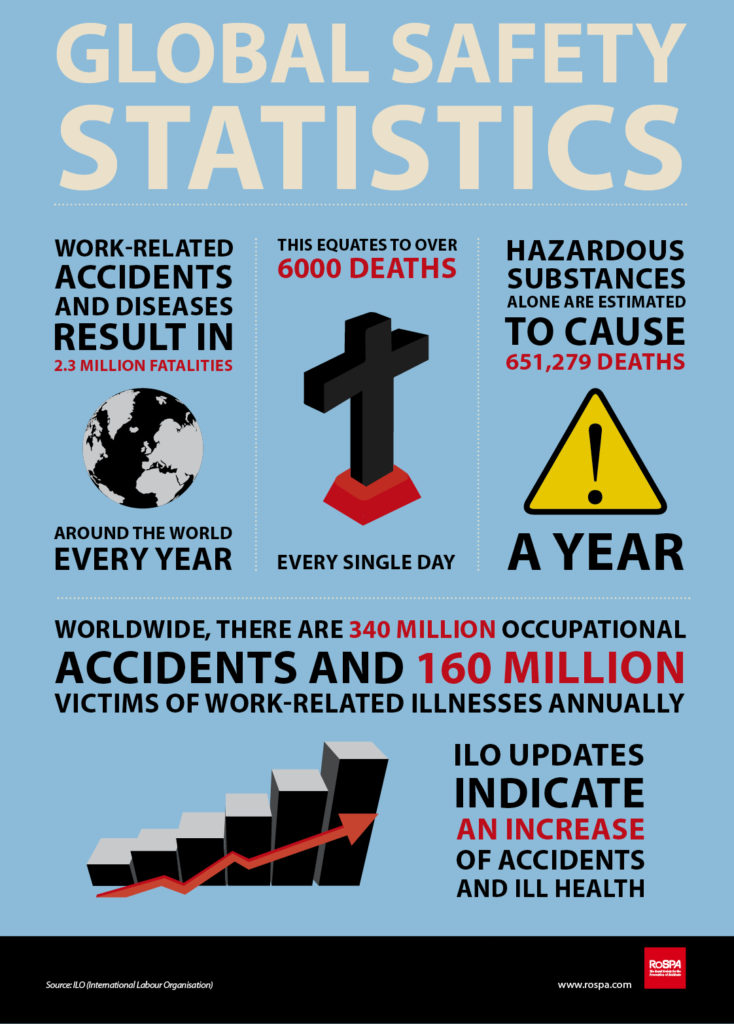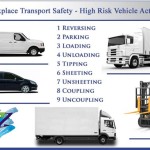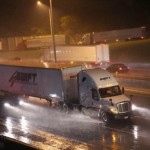
Introduction
Every year, there are over 5000 accidents involving transport in the workplace. About 50 of these result in people being killed. The main causes of injury are people falling off vehicles, or being struck or crushed by them. Sometimes, the monetary value of the damage resulting from these accidents could be ear-shattering! Within the last three months, we have had two ground collisions of aircraft at the Nation’s number one airport in Lagos. On several occasions, we have heard of trucks backing out and crushing pedestrians or fellow workers on site. We have also heard of trailers running amok sometimes knocking out the loading bay in the distribution centres of some well-known manufacturing companies.
 This guidance has been produced to help people involved in workplace transports reduce the chances of accidents happening. It is mainly aimed at managers but operators and their safety representatives will also find it useful.
This guidance has been produced to help people involved in workplace transports reduce the chances of accidents happening. It is mainly aimed at managers but operators and their safety representatives will also find it useful.
Employers have a legal duty to ensure that the health and safety of their employees, contractors and members of the public are not put at risk as a result of the work they do. Employees and the self-employed also have a duty to look after their own health and safety and that of anyone who might be affected by their work.
What Is Workplace Transport?
Workplace transport is any activity involving vehicles used in a workplace. Vehicles driven on public roads are excluded, except where the vehicle is being loaded or unloaded on a public road adjacent to a workplace.
Managing workplace transport safety
To manage workplace transport effectively, there are three key areas to consider when carrying out your risk assessment:
- Safe Site (Design and Activity)
- Safe vehicle
- Safe driver
Safe Site – Design
Segregation
Every site is different and likely to present different hazards and risks. However, a well-designed and maintained site with suitable segregation of vehicles and people will make workplace transport accidents less likely.
The most effective way of ensuring pedestrians and vehicles move safely around a workplace is to provide separate pedestrian and vehicle traffic routes. Where possible, there should also be a one-way system as this will reduce the need for vehicles to reverse, and will help pedestrians and drivers.
Your circumstances might mean that complete segregation is not possible, so you would need to have clearly marked pedestrian and vehicle traffic routes, using measures such as barriers and signs.
There should be separate entrances and exits for vehicles and pedestrians, and vision panels should be installed on doors that open onto vehicle traffic routes. Where pedestrian and vehicle traffic routes cross, they should be clearly marked using measures such as dropped kerbs, barriers, deterrent paving e.t.c., to help direct pedestrians to the appropriate crossing points.
Traffic routes
The general principles for safe traffic routes are as follows:
– Make sure they are wide enough for the safe movement of the largest vehicle.
– Ensure surfaces are suitable for the vehicles and pedestrians using them, e.g. firm, even and properly drained. Outdoor traffic routes should be similar to those required for public roads.
– Avoid steep slopes.
– Avoid sharp corners and blind bends.
– Keep them clear of obstructions.
– Make sure they are clearly marked and signposted.
– Keep them properly maintained.
Some parts of a workplace, such as cast-iron columns, storage racking, pipework and cables, are vulnerable to impact from vehicles and will need to be protected. Where it is not ‘reasonably practicable’ to widen traffic routes that existed before this date, traffic management systems and/or parking restrictions should be used if necessary.
What does ‘reasonably practicable’ mean?
This means balancing the level of risk against the measures needed to control the real risk in terms of money, time or trouble. However, you do not need to take action if it would be grossly disproportionate to the level of risk.
Temporary traffic routes
Temporary workplaces, e.g. construction and forestry sites, often have routes for vehicles and pedestrians that change as work progresses. Where possible, these routes should comply with the same basic standards as for the permanent traffic routes listed above.
Visibility
Visibility should be good enough for drivers to see hazards, and pedestrians to see vehicles. Adequate visibility for drivers is related to vehicle speed and the distance needed to stop or change direction safely. Consider having mirrors where sharp or blind bends cannot be avoided.
Speed
Reducing vehicle speed is an important part of workplace transport safety. Fixed traffic control measures such as speed humps, chicanes and ‘rumble strips’ can reduce vehicle speed. It is important to select the most appropriate control as the wrong measure can increase risk by, for example, reducing vehicle stability.
Speed limits can also be used, but they need to be appropriate, properly enforced and, where possible, consistent across the site.
To assess an appropriate speed limit, consider the route layout and its usage. For example, lower speeds will be appropriate where pedestrians are present or where lift trucks and road-going vehicles share a traffic route.
Signs, signals and markings
Signs for drivers and pedestrians in a workplace should be the same as those used on public roads (as shown in the Highway Code), wherever a suitable sign exists.
They should be well positioned and kept clean. Where driving is likely to be carried out in the dark, illuminated or reflective signs should be used.
White road markings should be used to regulate traffic flow, and yellow markings should be used for parking. Wherever possible, such markings should be reflective and maintained regularly.
Lighting
Every workplace should have suitable and sufficient lighting, particularly in areas where:
– Vehicles manoeuvre or pedestrians and vehicles circulate and cross
– Take care to ensure there are no sudden changes in lighting levels which may lead to drivers being dazzledLoading and unloading takes place
Safe Site – Activity
Reversing
Around a quarter of all deaths involving vehicles at work occur as a result of reversing. It also results in considerable damage to vehicles, equipment and property.
The most effective way of reducing reversing incidents is to remove the need to reverse by, for example, using one-way systems. Where this is not possible, sites should be organised so that reversing is kept to a minimum.
Where reversing is necessary, consider the following:
– Install barriers to prevent vehicles entering pedestrian zones.
– Plan and clearly mark designated reversing areas.
– Keep people away from reversing areas and operations.
– Use portable radios or similar communication systems.
– Increase drivers’ ability to see pedestrians.
– Install equipment on vehicles to help the driver and pedestrians, e.g. reversing alarms, flashing beacons and proximity-sensing devices.
Signalling
The job of banksmen (or signallers) is to guide drivers and make sure reversing areas are free of pedestrians. However, in some industries, such as quarrying, banksmen are rarely used due to the size of the vehicles involved.
If you are using banksmen, make sure:
- Only trained banksmen are used
- They are clearly visible to drivers at all times
- A clear and recognised system is adopted
- They stand in a safe position throughout the reversing operation
Parking
Parking areas should be clearly indicated and there should be separate parking areas for commercial and private vehicles. There should also be designated areas where commercial vehicles can be loaded and unloaded.
When vehicles are parked, their parking brakes should always be applied. On most trailers disconnecting the emergency air line does not apply the trailer parking brake.
Drivers should never leave a vehicle unattended without ensuring both the vehicle and the trailer are securely braked, the engine is off and the key to the vehicle has been removed.
Where appropriate, trailer legs should be lowered to the ground.
Coupling and uncoupling
Drivers and those who have overall control of sites (site operators) should make sure that coupling and uncoupling areas are well lit, with firm and level surfaces.
Drivers should be properly trained and have their work monitored by site operators to make sure they follow a safe system of work, involving the use of trailer and tractor unit parking brakes as appropriate.
Loading and unloading
To minimise the risks to those involved in loading and unloading, information should be provided on the nature of the load and how it should be properly loaded, secured and unloaded. This information should accompany the load and be available to those involved in the loading, transportation and unloading activities.
The loading and unloading area should be:
- Clear of traffic and people not involved in the activity
- On level ground
- Segregated from other work areas
- Clear of overhead cables, pipes, or other obstructions
- Protected from bad weather where possible
Make sure vehicles and trailers have their brakes applied and all stabilizers are in the correct position before loading or unloading.
Throughout loading and unloading there should be a safe place where drivers can wait.
Make sure you take measures to prevent vehicles being driven off during either loading or unloading at loading bays. These can include:
- Traffic lights on loading bays
- Vehicle or trailer restraints
- Keeping keys in a safe place, e.g. with a ‘custody’ system
Tipping
To reduce incidents where vehicles overturn during tipping operations, site operators and drivers should co-operate with each other and make sure:
- Tipping is carried out on level ground
- The tractor unit and trailer of articulated vehicles are aligned
- Wheel stops are used where possible
- The tailgate is released and secured before tipping
- No pedestrians are in the tipping area
- The vehicle is not left unattended and cab doors are closed
- There are no overhead obstacles, such as power lines
If loads stick during tipping:
- The vehicle should not be driven to free the load (the body should be lowered and then raised);
- Drivers should not climb onto the raised tipper section to free the load.
- Mechanical ‘vibratory discharge systems’ can help to free a stuck load.
Overturning
To minimise vehicle overturns, site operators and drivers should consider:
- Vehicle suitability
- The condition and slope of the surface
- The operating speed of the vehicle
- Traffic routes that avoid sharp bends
- The nature and positioning of the load
Drivers should be monitored to ensure they follow safe systems of work, e.g. they are wearing seat belts which should be used even if a roll-over protection system (ROPS) is fitted.
Sheeting
To prevent falls from height when sheeting, follow these simple steps:
- Avoid the need to work at height wherever possible, i.e. sheet from the ground
- Where work at height cannot be avoided, use measures such as platforms with barriers to prevent falls
- If there is still a risk of a worker falling, use personal protective equipment to minimise both the distance and consequences in the event of a fall.
At each step, always consider measures that protect everyone who is at risk (e.g. barriers) before measures that only protect the individual (e.g. fall-arrest systems).
The walkways of working platforms should be made of non-slip material. Consult vehicle manufacturers before installing any vehicle-based sheeting system.
Housekeeping
Traffic routes should be free from obstructions and kept clean. Signage should be cleaned and maintained so that it remains visible and effective.






